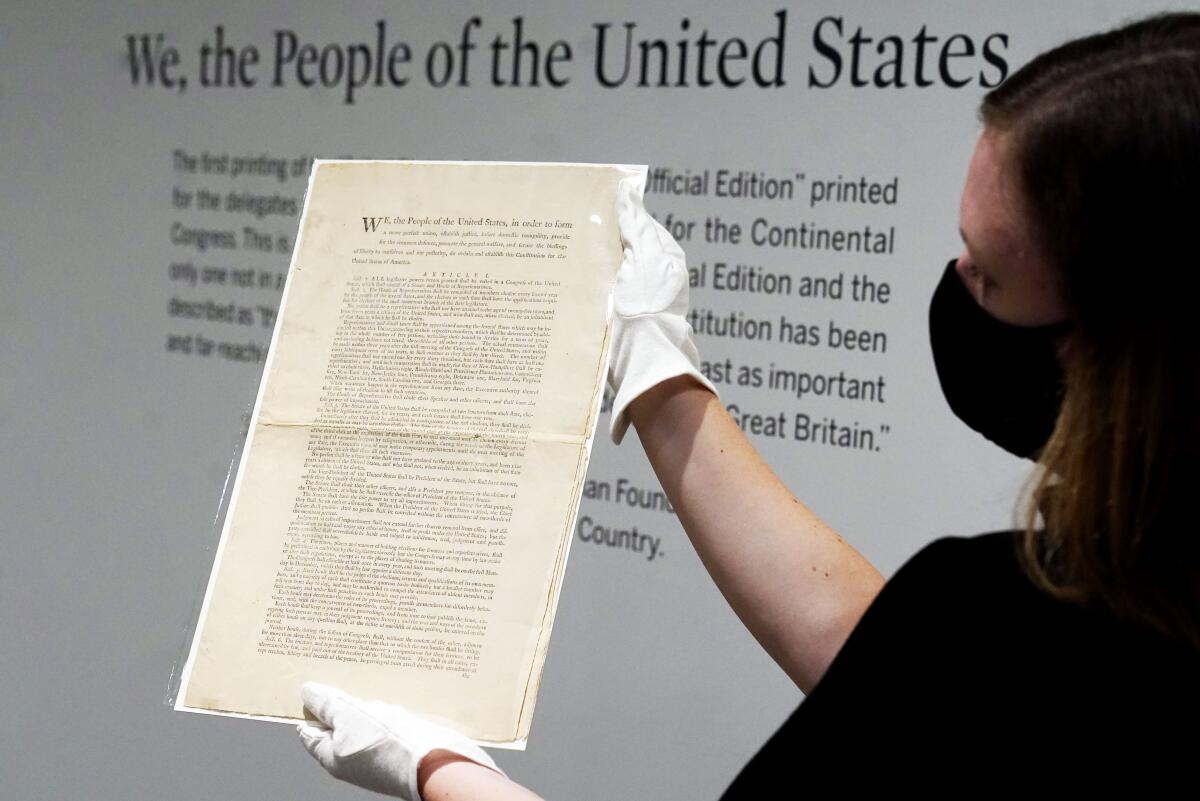Letters to the Editor: How we know for sure that the Constitution is a ‘living’ document

- Share via
To the editor: All my adult life, I’ve been a person of the left. Yet on occasion I find myself agreeing with Jonah Goldberg’s columns. Such are the times we live in.
His recent piece on the “horseshoe theory” of politics — where the extreme ends of the left and the right bend toward each other, similar to a horseshoe — is a case in point. I’ve witnessed this phenomenon myself.
Goldberg wrote about the extreme right’s “common good constitutionalism” mirroring the extreme left’s “living constitution” argument. But he didn’t take into account that there is the ability to amend the Constitution within the document itself.
The framers clearly did think the Constitution is a living document that would need to be updated over time to maintain its usefulness.
Steve Tarzynski, Santa Monica
..
To the editor: I couldn’t disagree more with Golberg’s argument that, in particular, the “right in U.S. politics often become less statist as they become more extreme.”
Just look at the recent case of the woman in Texas who was denied, by the state, the liberty to terminate a nonviable and dangerous pregnancy. And keep in mind that the justices who overturned Roe vs. Wade and created this chaotic mess all have ties to that “bulwark of classical liberalism,” the Federalist Society.
I would also remind Goldberg that it was the neoliberals Milton Friedman and Ronald Reagan, not the “American left,” who advocated for open borders decades ago.
Horseshoe theory of politics? Sounds more like the boomerang theory.
John Eaglesham, Long Beach
..
To the editor: In attempting to justify his theory that the extreme right and left bend toward each other, Goldberg makes some illogical and contrived arguments.
He says the Constitution is a “quintessentially liberal charter.” I would say that its provisions (albeit in an indirect way) protecting slavery cannot be thought of as “liberal” in any dimension.
Goldberg also denigrates the left’s “living constitution” argument, implying agreement with conservatives who try to apply the Constitution’s provisions as the framers wrote or intended them. This defies the concept stated by Chief Justice John Marshall in 1819 that the Constitution is “intended to endure for ages to come, and consequently, to be adapted to the various crises of human affairs.”
As a progressive, I very much disagree with Goldberg’s idea that left and right come together in their respective extremes.
Donald L. Singer, Cardiff, Calif.





